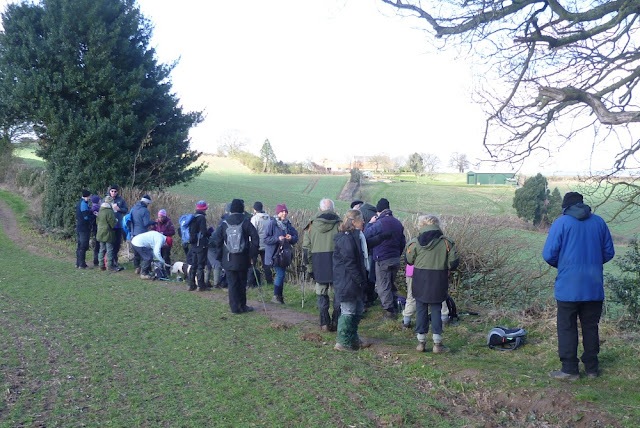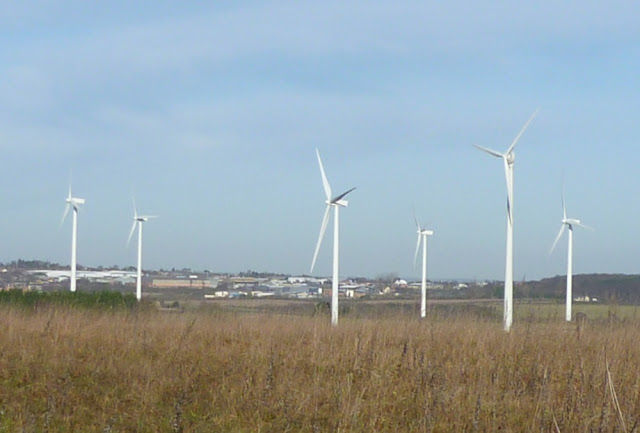A good turnout (23) in fine weather for this 6-mile excursion from the centre of Blidworth towards Harlow Wood and some historic parts of Sherwood Forest.
 |
| Main route and alternative way back visiting Will Scarlet's grave |
The walk started at the Post Office in Blidworth ...
... and used the well-surfaced Robin Hood Way passing between some interesting (to me anyway) rocks. These conglomerate rocks, also known as pudding stone, are
glacial rock, the same rock as the nearby Druid Stone, deposited during the last Ice Age.
The views from the Robin Hood Way stretch all the way to Gainsborough, interupted only by the Lindhurst Wind Farm, originally comprising five 1.8MW, 125m turbines (the tallest in Nottingham).
Coffee was taken at the Forest Stone. Situated
in the northern part of what was Lyndhurst Wood in Medieval times, it allegedly marks the location of the Swainmote court of
Sherwood Forest, one of the great courts of the forest mentioned in the
Forest Charter of 1217.
 |
| Coffee stop, Forest Stone |
We returned south to the Robin Hood Way along the edge of Harlow Wood to reach Fountain Dale ...
... site of a medieval moat, sometimes called Friar Tuck’s Island where Robin Hood was reputedly thrown in the river. It is a well-preserved example of a small, residential moat, dating back to before 1251 and was
the site of a hunting lodge within Sherwood Forest from which the forester
Raffe Clerc collected tolls.
The Robin Hood Way goes parallel to Rainworth Water which runs through several fishing lakes ...
... and passes close to Friar Tucks Well, allegedly close to the bridge shown below ...
... before crossing Rainworth Water to return to Blidworth.
Now a characteristic of Blidworth is the number of stables and horses in the surrounding fields, presumably due to the excellent local bridleways.
Originally, it was planned to divert (see map) to visit Will Scarlet's grave at the Church of St Mary of the Purification, Blidworth. Not wishing to experience the problems we had had with skittish horses on the recce meant that this was not done. Here is what you missed.
The church and churchyard are worth a visit though.














































